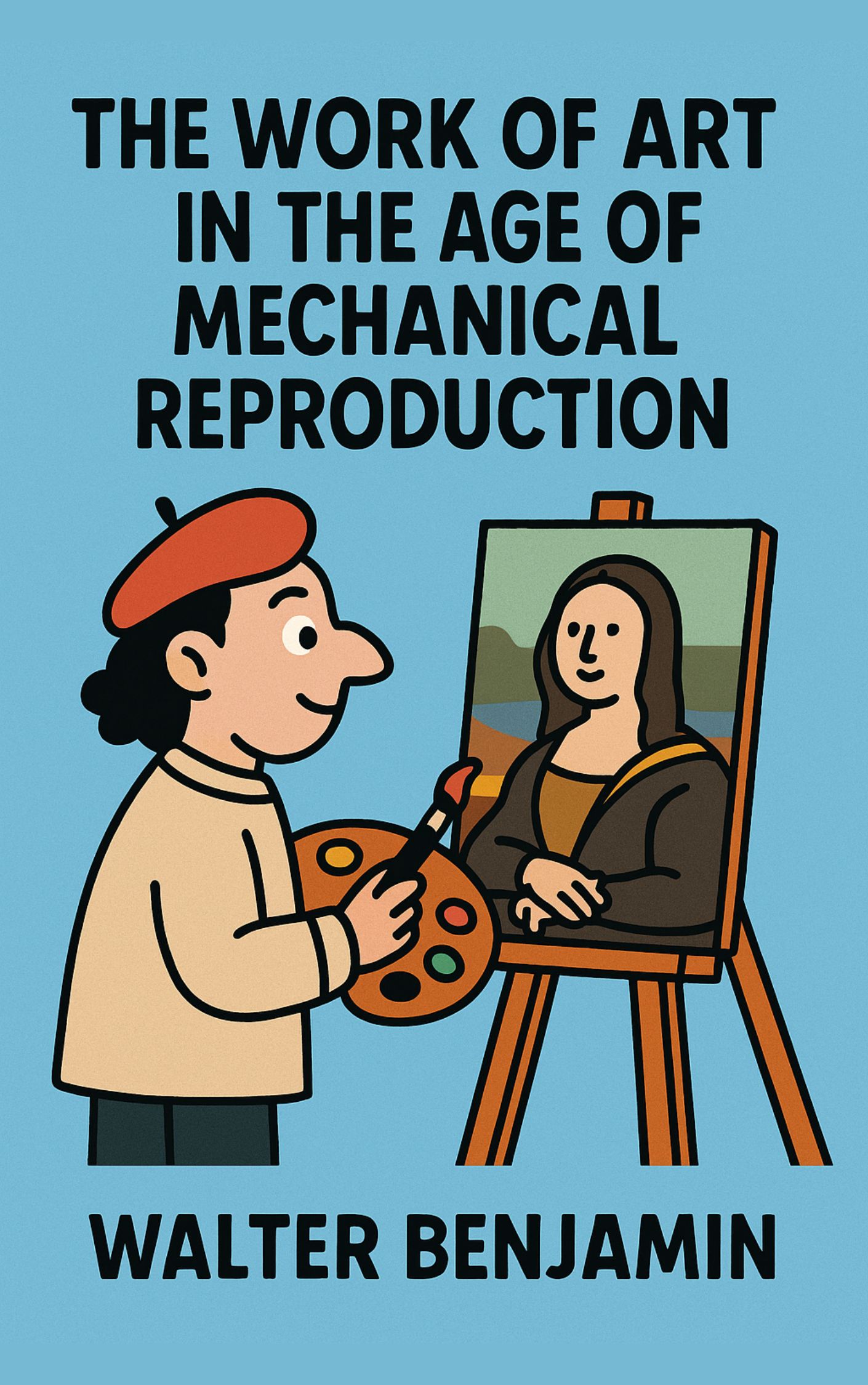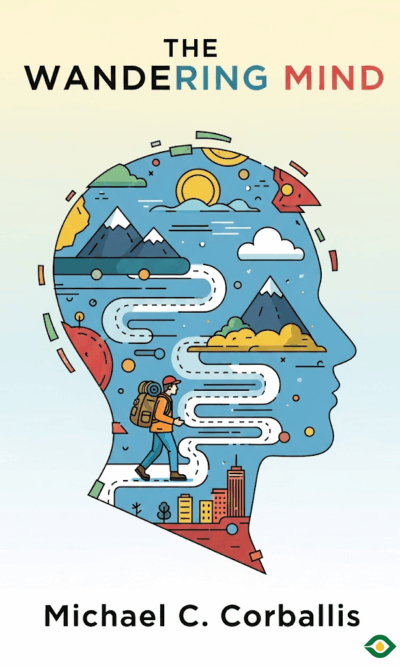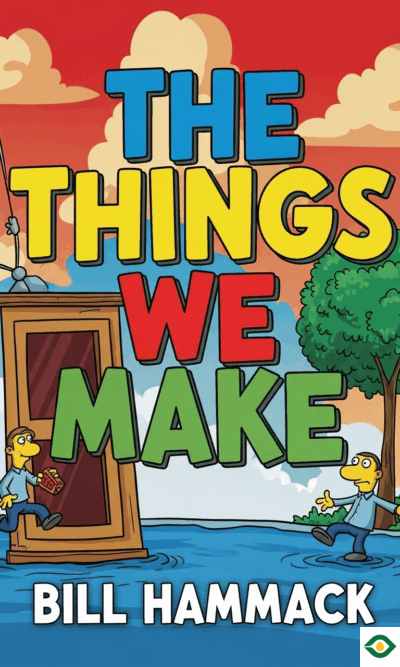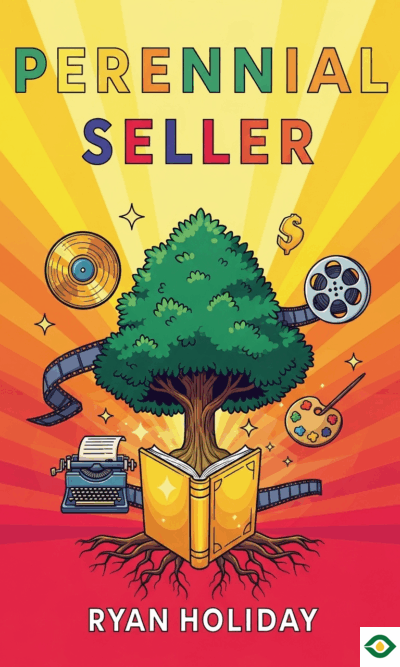Description
There is something truly special about standing in front of an original piece of art. Whether it’s a painting in a quiet gallery or a sculpture in a historic museum, the experience feels powerful. The colors, textures, and even the atmosphere around the artwork add to a certain feeling that’s hard to describe. Walter Benjamin calls this feeling the “aura.” It’s the presence, the magic, the uniqueness that only the original piece holds. But what happens when that artwork gets copied over and over again?
In our modern world, we can take a photo of that masterpiece, print it out, and hang it in our living room. Millions of people can own the same image. While this sounds like a great way to make art available to everyone, Benjamin believed it came with a hidden cost. He argued that every time we duplicate an artwork, we take away a bit of its aura. It becomes just another image—easily consumed, easily forgotten.
When art is reproduced through cameras, printers, or digital screens, it no longer lives in one place at one time. It no longer has a connection to a moment or a history. Instead, it floats around in the world like a product. And as a product, it can be bought, sold, shared, and liked. But the personal, emotional connection we might feel in front of the original work begins to disappear.
This change isn’t just happening with art. It’s happening to the way we experience life, too. Think about the moments we used to treasure—watching a sunset, attending a concert, or celebrating a birthday. These moments used to live only in our memories. Now, they’re captured on phones, shared on social media, and viewed by strangers. Instead of fully living in the moment, we are often busy trying to record it. And just like art, our experiences can start to feel less real, less unique.
Benjamin didn’t stop at just talking about paintings and photos. He took his ideas deeper, into politics. He believed that powerful people—especially in fascist regimes—used these new technologies of reproduction to influence the public. By creating dramatic films and powerful images, they turned politics into a kind of show. Crowds were shown carefully crafted scenes that looked beautiful or inspiring, but they were meant to control how people think and feel. This is what Benjamin meant when he said fascism “aestheticized politics”—turning political ideas into attractive images that draw people in without giving them room to think critically.
This kind of influence is dangerous because it can be used to manipulate people on a massive scale. But Benjamin also saw hope. He believed that if regular people could use the same tools—film, photography, and other forms of art—they could fight back. Instead of art being kept in museums or private collections, it could be used in the streets, in homes, and in classrooms. Art could help people ask questions, challenge authority, and imagine a better future. It could belong to everyone, not just the elite.
By making art more democratic, Benjamin saw the possibility of it becoming a tool for education and change. He imagined a world where art wasn’t just something to admire, but something to use. Not just to decorate, but to wake people up.
The danger, though, still remains. In a world filled with copies, it’s easy to stop paying attention. We scroll past images, listen to short clips, and view the world in bite-sized pieces. As a result, we risk losing our ability to feel deeply connected to anything. When everything looks the same and is available all the time, nothing feels special anymore.
Walter Benjamin’s message is a reminder. It tells us to pause and think about how we interact with art, with media, and with our own experiences. It invites us to look beyond the surface and ask: What are we losing in this age of endless duplication?
The beauty of his idea is not just in pointing out what’s wrong, but in suggesting what we can do. We can reclaim the aura in our own way—by being more mindful, by creating art with intention, by using technology not just to share but to connect. We can treat experiences as meaningful, not just content. We can ask questions and look deeper.
Even though he wrote this many years ago, Benjamin’s ideas feel very fresh today. In a time where we’re flooded with images and videos, where everyone is trying to go viral, his thoughts remind us to find value in the real, the original, the intentional. Whether it’s art, politics, or personal memories, he teaches us to slow down and pay attention.
So, while mechanical reproduction has made art more reachable, it also challenges us. We must be thoughtful about how we engage with what we see and hear. We must understand that not everything valuable can be copied or shared. Some things must be experienced directly to be truly understood.
In the end, Benjamin’s work is not just about art—it’s about life. It’s a call to protect what is rare and beautiful, and to use our tools not to numb the world, but to awaken it.





